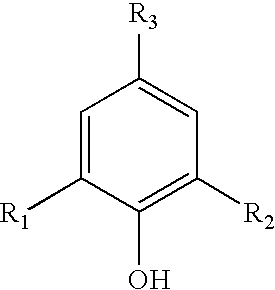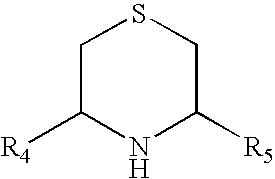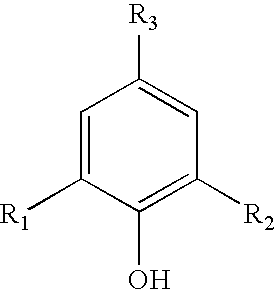Urethane acrylate composite structure
a technology of urethane acrylate and composite structure, which is applied in the direction of synthetic resin layered products, coatings, transportation and packaging, etc., can solve the problems of inability to crystallize urethane acrylate compositions, inability to reduce the viscosity inability to meet the requirements of urethane acrylate compositions, etc., to achieve excellent resin curing and finished composite structure properties, reduce cost
- Summary
- Abstract
- Description
- Claims
- Application Information
AI Technical Summary
Benefits of technology
Problems solved by technology
Method used
Image
Examples
examples 1-7
[0045] A urethane acrylate composition of the subject invention is produced in a 5 liter, 4-necked round bottom flask. The flask is inspected, cleaned, and purged with air that is free of moisture. The flask is then charged with the functionalized acrylate component, the inhibitor, and catalyst for the reaction between the isocyanate component and the functionalized acrylate component. Agitation is started using an agitator operating at about 250 rpm. The flask is cooled to a temperature of less than or equal to 20° C. The agitation is continued for about 15 minutes to dissolve and disperse the inhibitor in the functionalized acrylate component while maintaining a temperature of less than or equal to 20° C. in the flask. The isocyanate component is then fed into the flask. The temperature in the flask is maintained at or below a feed temperature while the isocyanate component is fed into the flask. Once all of the isocyanate component is fed into the flask, the reaction temperature ...
PUM
| Property | Measurement | Unit |
|---|---|---|
| temperatures | aaaaa | aaaaa |
| viscosities | aaaaa | aaaaa |
| thick | aaaaa | aaaaa |
Abstract
Description
Claims
Application Information
 Login to View More
Login to View More - R&D
- Intellectual Property
- Life Sciences
- Materials
- Tech Scout
- Unparalleled Data Quality
- Higher Quality Content
- 60% Fewer Hallucinations
Browse by: Latest US Patents, China's latest patents, Technical Efficacy Thesaurus, Application Domain, Technology Topic, Popular Technical Reports.
© 2025 PatSnap. All rights reserved.Legal|Privacy policy|Modern Slavery Act Transparency Statement|Sitemap|About US| Contact US: help@patsnap.com



